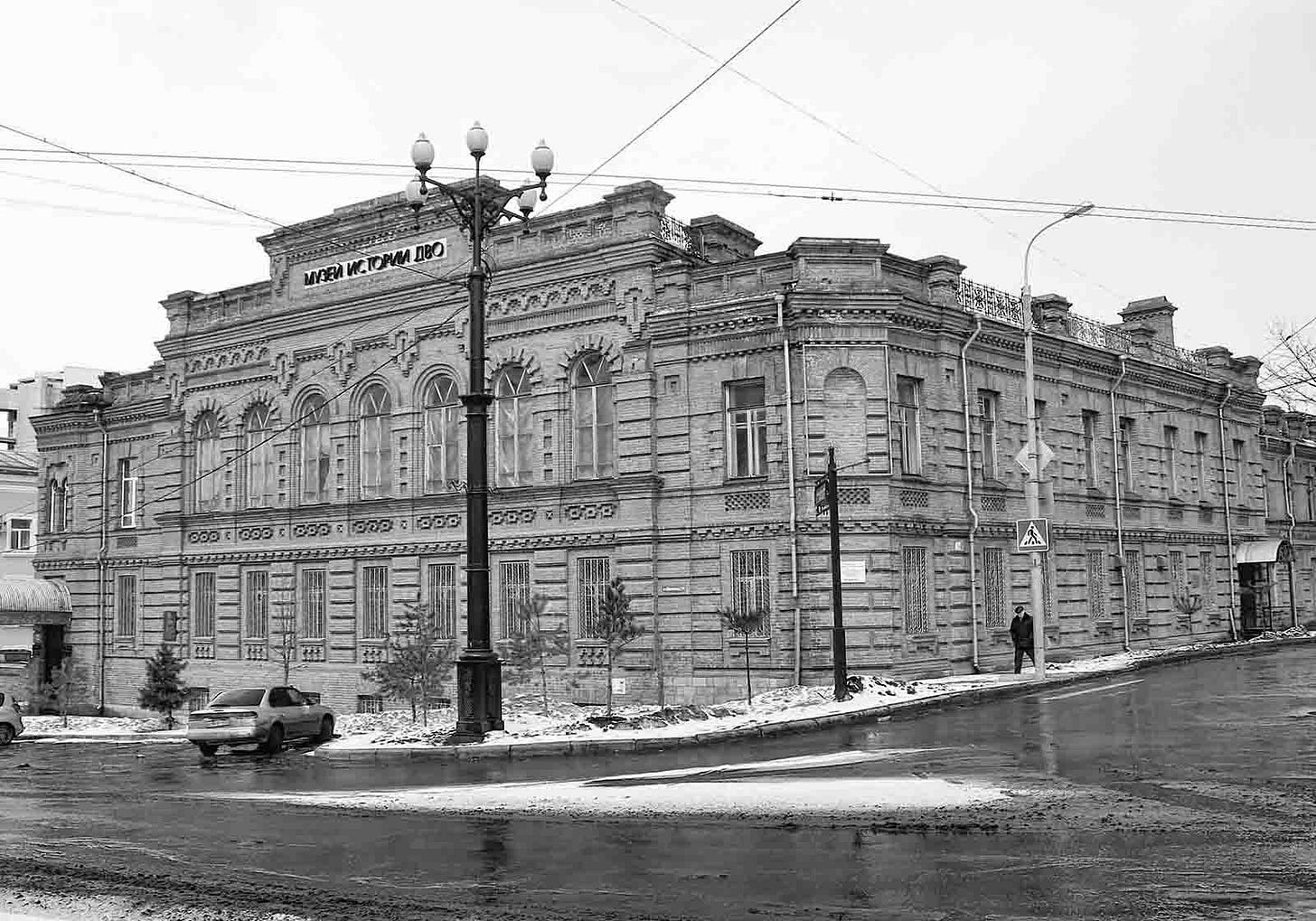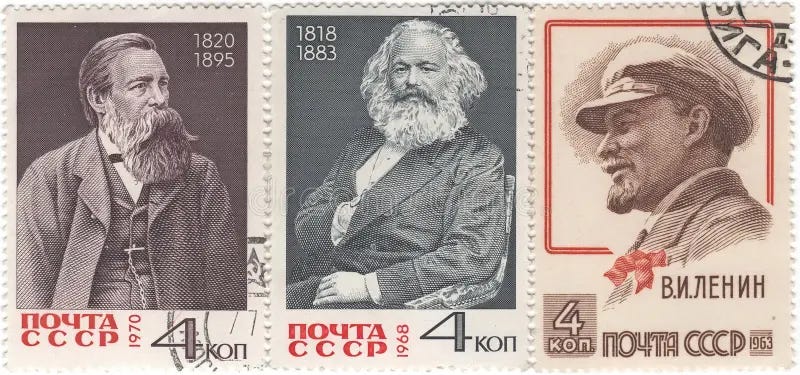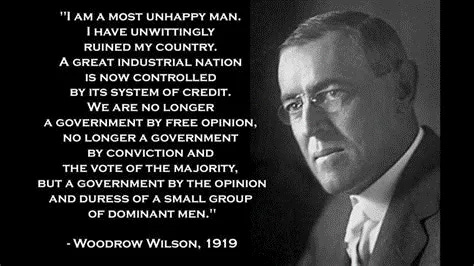NZ Financial Resets: Part 4a: Central Bank Conspiracies and Communism
A truly grand conception…a bankers dream. Measures, millstones and the inflation grind.

“The way to crush the bourgeoisie is to grind them between the millstones of taxation and inflation” - Soviet Union Communist Party Leader V.I. Lenin attributed by English economist John Maynard Keynes1
Previous: Who Stole the Silver?
Next: 1930 - Treasury Beguiles
Home: New Zealand’s Financial Resets
New Zealand’s Financial Resets
PART 4a: Central Bank Conspiracies and Communism
Measure 5: Gosbank, the central bank of the Soviet Union
In their Manifesto of the Communist Party (1848) Karl Marx and Frederick Engels declared the aim of communism was
What measures? The ‘Communist Manifesto’ as it became known had ten measures and Measure 5 was key.
Marx’s role as the intellectual father of communism is well known. Less well known is his provenance. Marx was born into a wealthy Jewish Prussian family of merchants and bankers, the Cohens, on his maternal side. His wife Jenny was from Prussian, Scottish and other European nobility. Aside from a baron for a father, her brother was a prominent communist, and her step brother was a German politician and Prussian Interior Minister (and chief spy). The banker side of Marx’ family was associated with the Rothschild and Warburg families, the future architects of the U.S. Federal Reserve.2
“Marx…was connected to the future ‘banksters’ of the world…[and]…communism was a tool created, financed and implemented by the wealthy and powerful to destabilize ‘nation states’ and exploit their resources for enormous profits”3
With those connections Marx didn’t need a complete grasp of the intricacies of banking. He no-doubt absorbed its culture by osmosis from his family and it is clear he had gained one significant insight by 1848; that control of both the volume and destination of credit and the money supply was a crucial element for changing society and controlling people, and a State bank was the mechanism to achieve this.
Whether or not Lenin actually said the words attributed to him, they were validated by the actions of the Bolsheviks. When they finally achieved real power nearly seventy five years after Measure 5 was proposed, with the civil war still raging, the Soviet Union’s new central bank was created. Officially, Gosbank’s 1922 founding was a response to an economic crisis, including hyperinflation, brought on by the 1914-1918 war, the Russian revolution and the ensuing civil war. It was one of the pillars of Soviet economic management, and was the only domestic bank operating in the country until 1991.4
Gosbank was an important tool for Lenin’s management of the inflation variable of his grind calculus. And it was successful. Despite Minister of Finance Vasily Garbuzov’s 1960 declaration of no inflation in the USSR, there was massive inflation (equals debasement) of the money supply. Price controls and scarcity were used to suppress consumer price inflation. In consequence ruble savings were high. When the economy finally began to open up and more goods became available, the true value of the currency was revealed as consumer prices soared.5
If the goal was to “wrest, by degree, all capital from the bourgeoisi“ then Gosbank was a crucial element of a wildly successful programme. By 1989 when the Soviet Union collapsed the middle class had ceased to exist as an independent economic force, and the population was beggared with large amounts of a valueless currency.
Rampant Soviet/USSR Inflation6

An indication of the rampant inflation of both money supply and consumer prices of the U.S.S.R., especially in the early years, is the currency in circulation. In 1917 the highest denomination banknote was 100,000 rubles. By 1921 the communist government was printing 10,000,000 ruble notes. In an effort to stabilize the currency in 1921 they introduced a gold ruble. It was unsuccessful.
In 1923 the third Soviet ruble was issued equal to 1,000,000 rubles of the first issue. The fourth ruble, issued in 1924, was equal to 50,000 rubles of the third issue. The paper ruble was revalued again in 1947 at 1/10th the fourth ruble’s value, and for the final time in 1967, again at 1/10th the previous value. Some coin denominations were minted from 50% - 90% silver until 1931.7
The Prussian Origins of Gosbank
has shown in how modern central banking, like modern education and communism, is rooted in ideas and institutions that originated in the Kingdom of Prussia.8
In 1765 Prussian King Frederick II, in an attempt to stem the flow of money from the Kingdom, founded the Royal Main Bank. The Royal Main was given the monopoly of issuance of the currency used for trade, and now famous banking houses such as the Warburgs and Rothschilds were established to complement it by facilitating trade and exchange for Prussia’s new currency. As Zoll says, “Who do you think Mayer Amschel Rothschild learnt his famous quote from?”9
The Royal Main Bank was subsumed into the Bank of Prussia in 1847. Given his banking roots and connections Marx no-doubt followed this event closely, and he would have known the history. The following year he published the Communist Manifesto and it’s not a stretch to believe that Measure 5 was based on his knowledge of the Royal Main Bank.10
The next significant event for central banking was the 1913 creation of the U.S. central bank, the Federal Reserve. And it had Prussian fingerprints all over it.
The Prussian Origins of the Federal Reserve
The true history of the founding of the Federal Reserve (the Fed) is well researched and won’t be reviewed here. That it was not created organically as a consequence of the Panic of 1907 (the official narrative) is now well known.
shows how extremely wealthy and powerful men centered around Theodore Marburg, with Prussian heritage and connections, were among the most influential cast members in the production of the Fed. One biographer of President Woodrow Wilson who signed the Federal Reserve Act (1913) into law, Jennings C. Wise, thought there was a darker side to Marburg’s public face. 11
Reading the above quote, one thinks of Henry Kissinger. As a ‘peace’ activist and prominent agitator for the League of Nations Marburg had

According to Wise, Marburg had a secret plan. Or more accurately, Marburg was a co-conspirator in a secret plan, a “truly grand conception…a bankers dream.”

By the end of 19th century, Theodore Marburg conceived of a plan for a “New World Order” whereby nations would fall to socialism and be regulated and financed by “international financiers” - today known as the globalist central banking system. Marburg put together a group that would aggressively campaign for the implementation of the future Federal Reserve; signed in by a man whom he had influenced greatly, President Woodrow Wilson. This group, incredibly, all have one thing in common. Their heritage, education or core philosophy all come from the totalitarian viewpoint of Prussia.12
A conspiracy to leverage immense wealth in order to obtain power and enforce peace was also being implemented across the Atlantic, this one with definite Prussian connections.13
When, at the time of [Cecil] Rhodes’ death in 1902, this “secret” society decided to partially reveal itself, it did so under the cloak of peace. It was only because they desired world peace, they insisted, that they had created their group in the first place, and only for the noblest of reasons that they aimed to “gradually absorb the wealth of the world.”
But contrary to this pacific public image, from its very beginnings the group was interested primarily in war. … Investigative Journalist James Corbett
14
An immediate goal of the conspirators was to institute a central banking cartel in the United States. To this end a group of the most powerful bankers in the U.S. (and the world) held a secret meeting in 1912 to finalize plans for the eventual passing of the Federal Reserve Act a year later.15
Woodrow Wilson soon realised what he’d done.16
The Prussian Origins of the Reserve Bank of New Zealand
What has communism, corruption and Prussia got to do with the founding of New Zealand’s central bank? Is there a connection?
Previous: Who Stole the Silver?
Next: 1930 - Treasury Beguiles
Home: New Zealand’s Financial Resets
Keynes, J.M., “The Economic Consequences of the Peace”. Harcourt, Brace and Howe, New York (1920) p235.
https://archive.org/details/economicconseque00keyn
The Cohens were related through marriage to the Rothschilds, specifically Nathaniel Rothschild, the founder of the London branch of the family banking dynasty. This relationship gives familial links between Karl Marx and the Rothschild family.
Nathaniel Rothschild married Hannah Cohen (22 Oct 1806). Hannah’s father was Levi Barent Cohen. Levi’s brother (Hannah’s uncle) was Salomon David Barent Cohen, who married Sara Brandes. Salomon and Sara’s daughter, Nanette Salomon Barent-Cohen, married Isaac Hijman Presburg. Isaac and Nanette’s daughter Henriette married a wealthy and prominent Prussian lawyer (and rabbi), Heschel Marx. They had a son. Karl.
Heschel Mordechai aka "Heinrich Marx" was the son of Meier Levi ben Samuel Mordechai-Marx.
https://en.wikipedia.org/wiki/Nathaniel_Rothschild
https://www.wikitree.com/wiki/Cohen-2393
https://www.wikitree.com/wiki/Barent-Cohen-1
https://www.wikitree.com/wiki/Presburg-9
“Lenin actually said the words“
Keynes agreed with the sentiment
Lenin was certainly right. There is no subtler, no surer means of overturning the existing basis of society than to debauch the currency. The process engages all the hidden forces of economic law on the side of destruction, and does it in a manner which not one man in a million is able to diagnose.
Keynes, J.M., “The Economic Consequences of the Peace”, (1920) p236.
https://archive.org/details/economicconseque00keyn/
“one of the pillars“
Russian Commercial Bank, a bank exclusively for foreign trade, was also established in 1922.
“no inflation in the USSR“
This was propaganda of course, but out of the scope of this essay. For an introduction see https://mises.org/wire/how-soviets-fixed-inflation-ruined-economy
“consumer prices soared“
Gosbank lost its monopoly in 1991. By 1993 official inflation in Russia, now reported more honestly, was in the order of 800%, and it had higher to go.
There were earlier examples of banks* which had some of the features of a modern central bank, but the crucial features of lender of last resort and monopoly on currency creation first came together in a state bank in Prussia. Those earlier banks also retained commercial and private banking functions. For example:
Bank of Amsterdam (established 1609); Sveriges Riksbank (Sweden, established 1668); Bank of England (established 1694)**; Banque Royal (France, established as a private bank - Banque Générale = in 1716, nationalised and renamed in 1717).
* For example the Bank of Saint George, Republic of Genoa (est. 1407).
** Although the Bank of England was established in 1694, it wasn’t until the Bank Charter Act 1844 the bank gained the monopoly of issuance of banknotes, an essential feature of modern central banking.
“Prussian King Frederick II“
Also known as Frederick the Great, he reigned from 1740 - 1786.
“Warburgs and Rothschilds“
The Rothschild bank opened for banking business in the 1760s. https://en.wikipedia.org/wiki/Rothschild_family
The Warburg bank opened for business in 1798.
https://en.wikipedia.org/wiki/M._M._Warburg_%26_Co.
“famous quote“
It’s doubtful Rothschild said this. See here for more: Deconstructing the Rothschild Conspiracy
“Bank of Prussia“
Which became the Reichsbank in 1876.
“true history of the founding of the Federal Reserve“
For the true history of the creation of the Federal Reserve see:
“The Federal Reserve Conspiracy” by Anthony Sutton
“Origins of the Federal Reserve” by Murray N. Rothbard
“The Creature From Jekyll Island” by G. Edward Griffin
“now well known“
At least by those who know official history is almost all fake and have been trying to extract the truth from source documents.
“Prussia Gate“
Specifically The Prussian Origins of the U.S. Federal Reichsbank.
“Theodore Marburg“
There had been two earlier attempts to establish a central bank in the U.S., the Bank of the United States (1791–1811) and a second Bank of the United States (1816–1836). Neither had their charters renewed.
After making a fortune as a young man Marburg gained national and international prominence as a peace activist and lobbyist for the League of Nations*. Along the way he developed an interest in monetary theory and gathered the wealthy and powerful into his orbit. As “the moving spirit” and organizer of The Third American Peace Congress in 1911 Marburg conjured up President of the United States William Taft to give the opening address.**
President Taft made him U.S. Ambassador to Belgium in 1912. Marburg “spared no effort” working to get Taft elected using Carnegie money. “It seems that Marburg, who had contributed handsomely to Taft's campaign, had arranged for his own appointment as Ambassador to Belgium in order that he might carry on the Internationalist plan.” Wise (1938) p105.

Marburg’s family probably originated from the town of Marburg in modern day Germany. It became the administrative centre of Prussia after the Austro-Prussian war (1866). In 1896 Marburg published The World's Money Problem, widely distributed by the Republican National Committee, and influential on Woodrow Wilson***. He was was Chairman of the Executive Committee and organizer of the Third American Peace Congress****, was vice-chairman of the Executive Committee of the American League to Enforce Peace*****, and founded (under the auspices of the Carnegie Endowment For International Peace), and was a Council member of, the American Association for International Conciliation.******
* Marburg authored:
Marburg, T., ”Draft convention for League of Nations”, Group of American Jurists, Macmillan, New York (1918) https://archive.org/details/draftconvention02marbgoog/mode/2up
Marburg, T., “League of Nations: Its Principles Examined”, The Macmillan Company, Macmillan, New York (1918)
https://archive.org/details/leaguenations00unkngoog/mode/2up
** Proceedings of The Third Annual American Peace Congress p 14.
*** Wilson and Marburg became friends in the 1880s when both were students at John Hopkins University. Wise (1938) p 22, p 38.
**** “The Philosophy of the Third American Peace Conference…was an appeal for upholding the established Pan-American policy of nonintervention in Mexico, and against the disarmament urged by Bryan. Plainly the conference was designed to discourage Japan”. Wise, J.C., (1938), p 86.

***** William Taft, U.S. President 1909-1913, was Chairman.

******

Carnegie Endowment For International Peace Founded December 14 1910 Year Book 1925 No 14 (https://archive.org/details/in.ernet.dli.2015.158022/)
“production of the Fed“
Not all central characters had Prussian roots. “Colonel” Edward Mandell House is an example of an important individual who had significant influence over Wilson. House’s activities were critical in achieving both the Federal Reserve and his diaries published after his death reveal foreknowledge of events leading to the U.S. entry into World War 1.
Independent journalists James Corbett (corbettreport.com) and Richard Grove (tragedyandhope.com) have individually investigated House, and together reviewed his book Philip Dru: Administrator, originally published anonymously in 1912. https://corbettreport.com/wwi/ https://corbettreport.com/philip-dru-flnwo-23/
Cecil Rhodes was nothing if not a creation of the Rothschild banking cartel, a solid Prussian connection.
Rothschild also funded Cecil Rhodes in the development of the British South Africa Company and the De Beers diamond conglomerate. He later administered Rhodes' estate after Rhodes' death in 1902 and helped to set up the Rhodes Scholarship scheme at the University of Oxford. He was a prominent member of the Round Table movement*, created in 1909. … https://en.wikipedia.org/wiki/Nathan_Rothschild,_1st_Baron_Rothschild
* The “Round Table movement” became the public persona of Rhodes’ “secret society”.
The Jekyll Island meeting was kept secret and even denied by the participants and their owned press for a quarter century. But details were eventually pieced together from memoirs and other public sources. The meeting was chaired by Senator Nelson Aldrich, Chairman of the National Monetary Commission, father in law of John D. Rockefeller Jr. and business associate of J.P. Morgan.
Griffin, G.E., “The Creature from Jekyll Island”, 3rd ed., American Media, California (1998)
The Federal Reserve Act was passed on 23 December 2013, when Congress was on holiday.
Addendum: 25 Feb. 2025. This quote is often attributed to Wilson. It is doubtful he said this. See here for more: Did Woodrow Wilson regret signing the Federal Reserve Act?










Jacob Astor was the richest man at that time and he was opposed to the idea of The Federal Reserve.
He was on the Titanic when it sank and died that night. Miraculously JP Morgan was supposed to be on the maiden Titanic voyage but canceled at the last minute.
Excellent, thank you. I am glad to read that Woodrow Wilson realised what he had done.